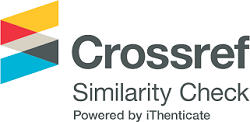Enhanced Luminous Flux of White Led using Flat Dual-layer Remote Phosphor Configuration
Abstract
The luminous flux of two different dual-remote phosphor structures concluding flat dual-remote phosphor (FDRP) and concave dual-remote phosphor (CDRP) is compared in this paper. The outcomes demonstrate that the FDRP structure is more lucrative than the CDRP structure. The article additionally clears up that in CDRP structure, the distance between two phosphor layers (d1) and the distance between the phosphor layer with the LED surface (d2) enormously affect the optical properties. Moreover, the difference in d1 and d2 causes a dramatic variance in the scattering and absorption properties of the remote phosphor layer and hence hugely affects WLEDs' illumination ability and chromatic uniformity. In order to limit these problems, the correlated color temperature of WLEDs, which is essentially a gauge of how the chromaticity observed when a "black body" radiator is warmed to a foreordained temperature, should be balanced out at 8500K when d1 and d2 vary, requiring a suitable modification of the YAG:Ce3+ phosphor's concentration. When d1 = d2 = 0, the scattering and assimilation in the remote phosphor layer become lowermost, prompting the most reduced viability in both shading quality and iridescent transition, which is confirmed dependent on the unearthly impacts created when these two separations are not same. Then again, when d1 and d2 get bigger, so does the dispersing surface, and the mixing of the blue beams with yellow beams swings to be increasingly homogeneous. This gives the insignificant different white light yet can't achieve any enhancement for luminous flux. According to the researched results, the luminous flux reaches a peak at 1020 lm when d1 = 0.08 mm or d2 = 0.63 mm whereas the chromatic inhomogeneity hits the lowest point when d1 = 0.64 mm or d2 = 1.35 mm.

This is an Open Access article distributed under the terms of the Creative Commons Attribution License (http://creativecommons.org/licenses/by/4.0/), which permits unrestricted use, distribution, and reproduction in any medium provided the original work is properly cited.
Keywords
Full Text:
PDFTime cited: 0
DOI: http://dx.doi.org/10.25073/jaec.201932.222
Refbacks
- There are currently no refbacks.
Copyright (c) 2019 Journal of Advanced Engineering and Computation









